Megatrends for nanoresearch
2009/05/01 Lakar Iraizoz, Oihane - Elhuyar Zientzia Iturria: Elhuyar aldizkaria
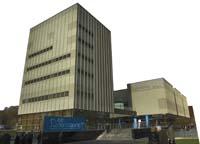
Working on the nanoscale is working on a scale tailored to atoms and molecules. On this scale, the slightest interference can be very annoying, and vibrations, electromagnetic radiation, etc. have a great influence. It is assumed that if for this type of research it was necessary to build a building they would do so in the most extraordinary place possible, as far as possible from sources that could cause interference.
However, CIC nanoGUNE, the research center that was born to be a reference in nanoscience and nanotechnology, has overcome all these difficulties, placing San Sebastian in the center. Igor Campillo, director of communication at CIC nanoGUNE and head of the nanoBasque agency, explains why they did not leave the city: "One of the main reasons was that their presence on the Ibaeta campus would facilitate researchers' approach to nanoGUNE. In fact, from the beginning we have sought to conduct basic research and provide university researchers and doctoral students."
In return, they have had to cope with the drawbacks of their location within the city, such as the vibration of the intense traffic of the Avenida de Tolosa, the magnetic fields generated by the motors, the electrical networks and the channel that passes next to the building, etc.
In order to carry out the work correctly, they knew they had to protect the building from all of them. The construction process was taken into account at all times. From start to finish. Campillo has taught us the exceptional cavities of the building that has nothing special from outside.

From the base
First, the final location of the building on the ground that the university provided them. They found where the ground was the lowest degree of interference from the point of view of vibrations and electromagnetic fields, where they were located. It was not in the place they had planned but, as Campillo explained, "functionality was prioritized, which led to the redesign of the building."
About twenty meters away from the road. "It looks like it's little, but it's enough to notice the difference in vibrations, as the level of vibration decreases very quickly as it moves away from the tap," said Campillo.
Once the location was established, the building was prepared from the foundation for the correct realization of the research inside. First, two platforms were built that do not touch each other, one for laboratories with special requirements and another for the construction of a parking lot. Thus, the vibration of vehicles in the car park does not reach the experimental area through the concrete platform.
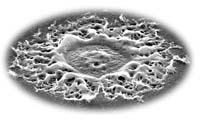
The platform under laboratories is not of any kind. It is a concrete slab of 1,500 square meters thick and a half meters, with a pile system below. The piles guarantee the stability of the slab and its vibratory insulation. To do this, they analyzed in detail the geometric arrangement of the piles. In addition, the laboratories were built in the subsoil, since the vibrations are lower than at ground level.
Also isolated from internal interference
Protecting from external interference is not enough for sensitive centers such as CIC nanoGUNE. Of course, laboratories need ventilation systems, electrical boxes, hot and cold water pipes, etc. Others also have vacuum pumps, compressed air pumps and other equipment. "All are essential and all cause noise or vibration, and these interferences can cause great experimental damage," said Campillo.
They therefore sought ways to avoid the influence of internally generated interference. "We built the facilities called service corridors next to the experiment rooms, where we included all the instruments that generate interference. These cells are in a floating slab, that is, in a small slab that does not touch the main platform. In addition, we have hung from the ceiling the devices that cause great vibrations so that the vibration does not reach the laboratories", explains Campillo.
When determining the location of the laboratories were based on the degree of vibration of each corner of the building, since not all have the same level of requirement. For example, the most sensitive laboratory is the electron microscopy laboratory. They placed him at the farthest end of the road, the most isolated corner. They also took special measures. "For example, we place double walls between the rooms and between them and the service corridor, and the doors are special to protect yourself from noise. In addition, in the most sensitive area differs the experimentation room of the experimental control room. Thus, the vibration and heat that workers produce when walking or talking do not affect the experiment," said Campillo.
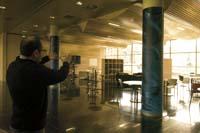
"Taking into account all these factors, and moving various installations, we managed to meet the requirements of the tools without the need for an additional insulation system," explains Campillo.
Built with expansion vocation
CIC nanoGUNE has a tower of six floors and a pair of cubes per plant. In total it has six thousand square meters, but not all are full. Some areas are not conditioned, even have a concrete structure in sight. The second floor of the cubes is like this, for example, and the entire tower of six floors.
They have done it specifically, according to Campillo. "We had several reasons for this. On the one hand, the attendance to the center will be gradual for ten years, or Therefore, it does not make sense to leave everything finished now, before the arrival of the new work teams, because they can have a requirement that we have not taken into account and that the best to respond to those possible demands can be to start with the structure".
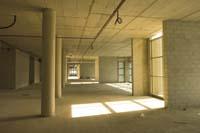
In addition, the evolution of working groups has been taken into account. As Campillo has pointed out, "it can happen that groups increase and need space to expand, or that they have to use experimental techniques that require certain conditions." For they have advanced to these needs and have built a building much larger than they needed.
Knowing all measurements, calculations, forecasts, transfers, restructuring, etc. that is behind, anyone could think that the time elapsed between making the first measurements and opening the center was very long. But with that Campillo has also surprised us. He tells us that it was only a year and a half since the first vibration measurements were made to determine the location of the building until they were first introduced.
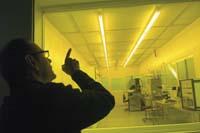

Gai honi buruzko eduki gehiago
Elhuyarrek garatutako teknologia




